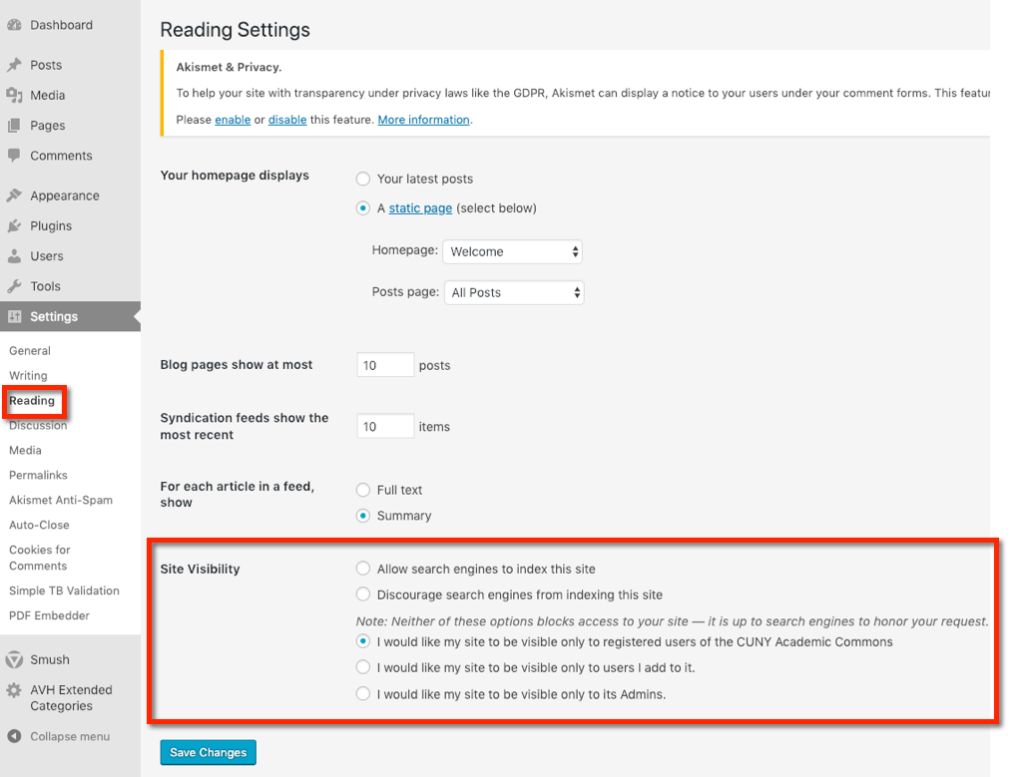Know your Settings and Boundaries.
When reflecting on your work, consider both your site’s privacy settings and your boundaries on the content you share.
CUNY Academic Commons is a neat open-source platform that allows you change your site’s privacy settings. This setting option comes up when you first create your site and can be changed at any point from your Dashboard, the back end interface to help you edit your site. All students are encouraged to make their digital portfolio to the public in order to showcase your learning, skills, and overall work. At the very least, it should be public enough in order to share with other CUNY Commons users. This allows your peers and the SLU Digital Portfolio Specialist to view your site and share feedback, until you are ready to make it entirely public.

CUNY Commons has five privacy options:
- Allow search engines to index this site
- Discourage search engines from indexing this site.
- I would like my site to be visible only to registered users of the CUNY Academic Commons
- I would like my site to be visible only to users I add to it.
- I would like my site to be visible only to its Admins.
I recommend you begin with an entirely public site (first option) or only visible to other users (third option). To change your site’s privacy settings, go to your Dashboard ->-> On the left-hand menu bar, click on Settings ->-> scroll down to click on Reading. Select your desired setting. For a more detailed tutorial visit the CUNY Commons virtual help desk.
Personal and Professional Boundaries.
Privacy boundaries matter too, and not all are necessarily straightforward. You are encouraged to know and/or develop your own personal and professional boundaries. In doing so, consider the lasting impacts of the content you produce and share publicly. Some of these might be straight forward, like keeping the identities of your children and intimate partners private. This does not mean you should post or write about them, but know that once this information is public, it stays public. Many social media influencers, online personalities, and bloggers disclose familial relationships. Know which side of the line you are on.
Other boundaries may not be so straight forward. For example, consider a dispute at work that stems from a highly polarizing debate. When reflecting on your work, consider the lasting impacts of the information you share on line. Who would read it? Would it be offensive? Can this negatively affect my reputation? As a general rule, ALWAYS maintain the confidentiality of sensitive information that was disclosed to you in privacy. Never exploit your private information of others.
If in doubt, do not hesitate to reach out to the Digital Portfolio Specialist!



